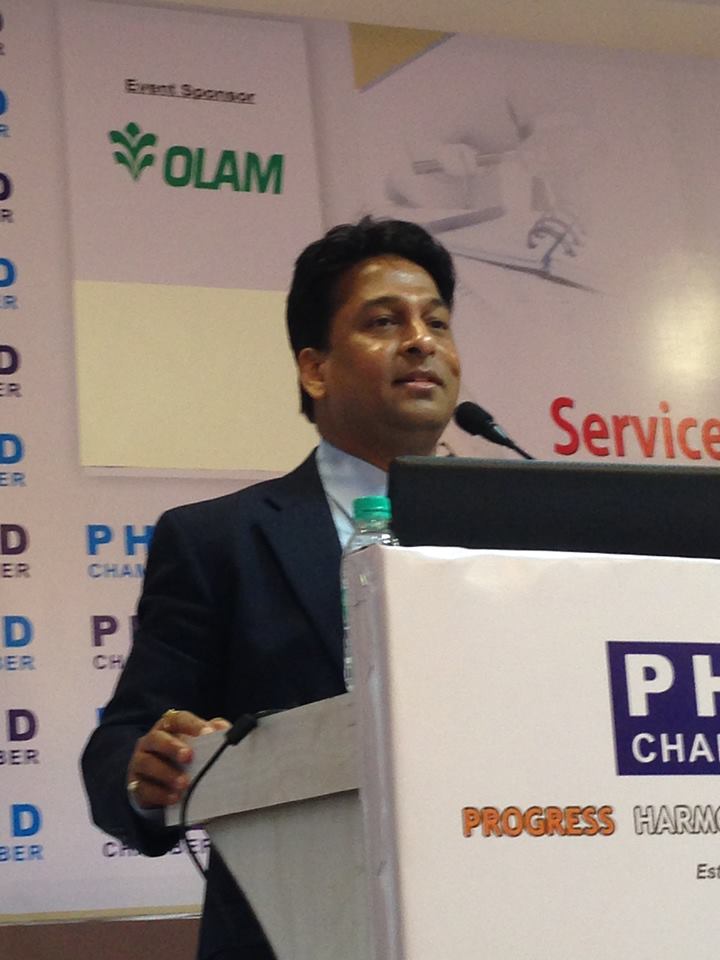| Article Section | |||||||||||
No bar on admissibility of Cenvat credit either as Inputs or Capital goods at any stage of proceedings |
|||||||||||
|
|||||||||||
No bar on admissibility of Cenvat credit either as Inputs or Capital goods at any stage of proceedings |
|||||||||||
|
|||||||||||
We are sharing with you an important judgment of the Hon’ble CESTAT, Kolkata in the case of Tata Steel Ltd. Vs. Commissioner of Central Excise, Jamshedpur [2016 (1) TMI 1059 - CESTAT KOLKATA)] on following issues: Issues:
Facts & Background: Tata Steel Ltd. (“the Appellant”) took Cenvat Credit on rails and other track materials, namely, sleepers, paints and crossings etc. (“the Impugned items”), used inside the factory in the railway network for transportation of raw materials, semi-finished, finished goods and also in the overhead cranes. The Appellant relying upon the judgment in the case of Jayaswal Neco Ltd. Vs. CCE [2015 (4) TMI 569 - SUPREME COURT] (“Jayaswal Neco Ltd.”) contended that the definition of ‘Inputs’ allows Cenvat credit on items used in or in relation to the manufacture of final product, whether directly or indirectly or whether contained in the final product or not; and since the Impugned items were used in their works for bringing raw materials and dispatching of finished excisable goods, accordingly Cenvat Credit is eligible. However, the Department denied Cenvat credit on the ground that the Impugned items do not fall within definition of ‘Inputs’, defined under Rule 2(g) of erstwhile Cenvat Credit Rules, 2002 (“the erstwhile Credit Rules”), as they did not go in mainstream manufacture. Accordingly, the Department issued a Show Cause Notice alleging irregular availment of Cenvat credit amounting to ₹ 1,05,38,425.64/- on the Impugned items as Inputs and ₹ 3,13,389/- as Capital goods during the period January, 2004 to April, 2004, respectively. On adjudication, the total demand of ₹ 1,08,51,815/- was confirmed with interest and equal amount of penalty. Being aggrieved, the Appellant preferred an appeal before the Hon’ble CESTAT, Kolkata, submitting that Cenvat credit on the Impugned items is admissible as Inputs or alternatively, as Capital goods. The Department argued that the Appellant has taken a diametrically opposite stand, pleading that the Impugned items are Capital goods and not Inputs for the purpose of claiming Cenvat credit on the same, and thus the Appellant approach is nothing, but taking recourse of a new ground which was not placed before the original authority, hence should not be considered. Held: The Hon’ble CESTAT, Kolkata after detailed discussion, held as under:
Accordingly, the Hon’ble Tribunal allowed the appeal filed by the Appellant. Our Comments: Presently, in order to avail Cenvat credit on any Inputs, it should qualify the definition of Inputs as provided under Rule 2(k) of the new Credit Rules. Prior to April 1, 2011, the definition of ‘Inputs’ read as under: "input" means- i. all goods, except light diesel oil, high speed diesel oil and motor spirit, commonly known as petrol, used in or in relation to the manufacture of final products whether directly or indirectly and whether contained in the final product or not and includes lubricating oils, greases, cutting oils, coolants, accessories of the final products cleared along with the final product, goods used as paint, or as packing material, or as fuel, or for generation of electricity or steam used in or in relation to manufacture of final products or for any other purpose, within the factory of production; ……………….” However, effective from April 1, 2011, the definition of ‘Input’ has been revised substantially wherein the new phrase “All goods used in the factory by the manufacturer” is used in the definition of ‘Inputs’ as against the phrase “used in or in relation to the manufacture of final products whether directly or indirectly and whether contained in the final product or not” existing prior to April 1, 2011. But, it would not be out of place here to note that by virtue of Clause (F) in Rule 2(k) of the new Credit Rules, it is provided that those goods which have no relationship whatsoever with the manufacture of final product, shall not be admissible as ‘Inputs’. Therefore in that manner more or less the scope of the definition of ‘Inputs’ has the same characteristics and wide enough so as to cover all the goods used in the factory except those which have no relationship at all to manufacturing process. The above stated wide connotation of the term ‘Inputs’ is also made explicit by the Central Board of Excise and Customs (“the CBEC”) vide Circular No. 943/04/2011-CX dated April 29, 2011 which provides as under:
In nutshell, the nexus with the manufacturing activity plays pivotal role in determining eligibility to avail Cenvat credit on ‘Inputs’. Similarly, the definition of Capital goods under Rule 2(a) of the new Credit Rules has also undergone changes vide Notification No. 3/2011-CE(NT) dated March 1, 2011 (effective from April 1, 2011) and Notification No. 28/2012-CE (NT) dated June 20, 2012 (effective from July 1, 2012).
By: Bimal jain - February 20, 2016
|
|||||||||||
| |
|||||||||||
 9911796707
9911796707

